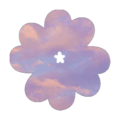Sewing Terms That Every Beginner Needs To Know
There are hundreds of sewing terms that can be really overwhelming if you are new to sewing. Here we cover the basic terms that you are bound to come across and need to know to navigate the world of PDF Patterns
- The Right Side of the fabric is the side you want on the outside – the pretty side
- When sewing, you will almost always sew things with ‘right sides together’ / ‘right sides facing’. This means that the pretty sides are touching, and the ugly sides are visible
- When you then sew this, it will open out, so the right sides are smooth and the wrong sides have the visible sewing line
- The most commonly sewn stitch
- The ‘regular’ stitch on your sewing machine
- The stitches should be uniform, and the thread should be on one side and the bobbin on the other
- If you can see the bobbin colour on the thread side or vice versa then you can play around with the tension on your machine
- When sewing seams, you always want to backstitch/ backtack at the beginner and the end of the line
- This is your machine’s way of tying a knot, so the threads don’t come undone
- There will be a button on your machine that makes it sew backwards and you only need to do a couple stitches back at the beginning and end
- A special type of sewing machine that makes the edges of the fabric neat and is good for sewing knit fabrics as it stretches well
- The overlocker I use and love is the Brother 1034D
- You can, however, do a mock overlock on most modern sewing machines (this is just a stitch that looks similar to an overlock and helps stop the edges from fraying)
- Darts are generally triangle or diamond shapes that are sewn to give a garment more shape
- Some common places for darts are the bust, back and waist.
- Darts are generally not needed on knit / stretchy fabric but will be needed on woven / non-stretchy fabric to help it curve to the body
- If a pattern has marked darts do not cut them out! Just mark them on your fabric with chalk or pins
- Topstitching generally means sewing so the stitching is visible
- It often helps make something look neater or keep it in place
- The pocket on a button-down shirt will be topstitched around the edges
- It can be done in matching or contrasting thread
- Using a blind hem foot helps keep your top stitching in a straight line
- The tension is how much thread the machine allows through at each time
- To create nice, even and uniform stitches you need the right tension
- If the tension is right, then you shouldn’t be able to see the bobbin colour on one side of the fabric and equally you shouldn’t be able to see the thread colour on one side of the fabric
